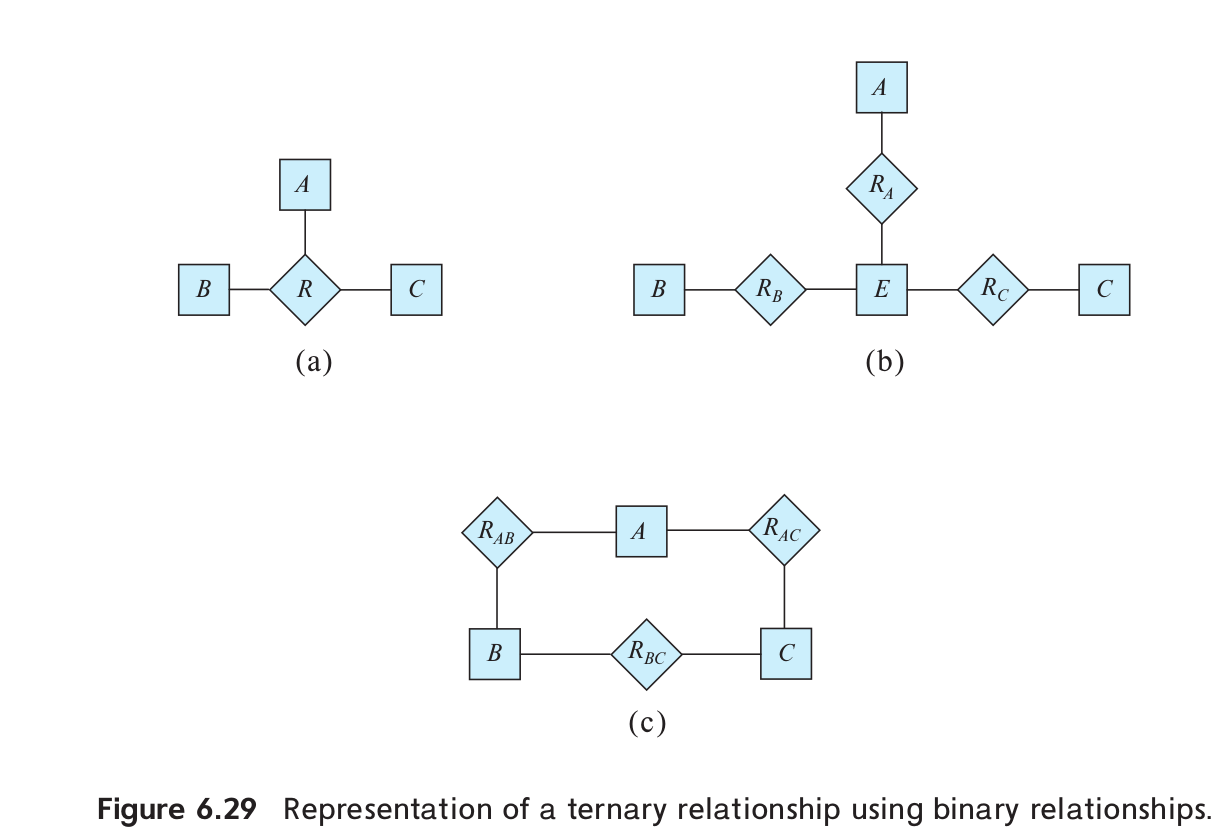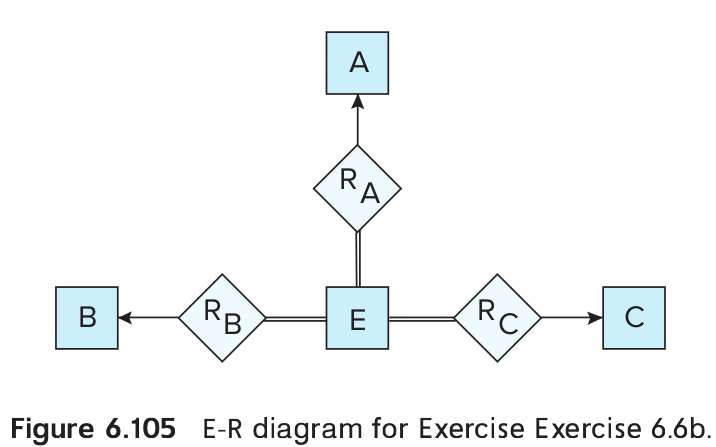6.6
Consider the representation of the ternary relationship of Figure 6.29a using the binary relationships illustrated in Figure 6.29b (attributes not shown).
Show a simple instance of \(E\),\(A\),\(B\),\(C\),\(R_A\),\(R_B\), and \(R_C\) that cannot correspond to any instance of \(A\), \(B\), \(C\), and \(R\).
Modify the E-R diagram of Figure 6.29b to introduce constraints that will guarantee that any instance of \(E\),\(A\),\(B\),\(C\),\(R_A\),\(R_B\), and \(R_C\) that satisfies the constraints will correspond to an instance of \(A\), \(B\), \(C\), and \(R\).
Modify the preceding translation to handle total participation constraints on the ternary relationship.

Let \(E = \{e_1, e_2\}\), \(A = \{a_1, a_2\}\), \(B = \{b_1\}\), \(C = \{c_1\}\), \(R_A = \{ (e_1, a_1), (e_2, a_2)\}\), \(R_B = \{ (e_1, b_1)\}\), \(R_C = \{ (e_1, c_1)\}\). We see that because of the tuple \((e_2,a_2)\), no instance of \(A\),\(B\),\(C\), and \(R\) exists that correspond to \(E\),\(R_A\),\(R_B\), and \(R_C\)
See Figure 6.105. The idea is to introduce total participation constraints between \(E\) and the relationships \(R_A\), \(R_B\), \(R_C\) so that every tuple in \(E\) has a relationship with \(A\),\(B\), and \(C\).

- Suppose \(A\) totally participates in the relationship \(R\), then introduce a total participation constraint between \(A\) and \(R_A\), and similarly for \(B\) and \(C\).